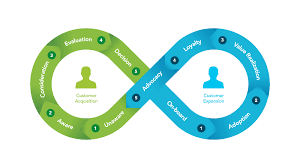Is the TPG Loop Scalable for Global Enterprises?
Yes. The Loop is built for multi-region teams: one data contract and scorecard, regional SLAs, iPaaS orchestration, and a governance cadence that keeps every country aligned.
TPG’s Loop scales globally by separating standards from local execution. A published data contract, metric dictionary, and naming standard anchor one scorecard. Regions operate with localized plays, languages, currencies, and time zones—but report to the same definitions. iPaaS-driven integrations, sandboxes, and release trains protect data quality, while revenue councils (global + regional) make start/stop/scale decisions that compound growth.
Global at a Glance

Enterprise-Scale Building Blocks
How the Loop Scales Without Losing Control
The rollout starts with a metric dictionary and naming standard (campaigns, offers, UTMs, stages). This is the contract that lets EMEA, AMER, and APAC run different plays while reporting identically. Original-source, lifecycle, and deal dates are protected to preserve history across acquisitions and system changes.
Next, we harden integrations. HubSpot acts as the engagement layer; your enterprise CRM(s) remain system(s) of record. iPaaS orchestrates multi-object syncs, with sandbox → staging → production release trains and data quality tests. Rate limits, retries, and field-level security are handled centrally.
Finally, federated governance keeps teams aligned. Regional SLAs reflect local time zones; rejection codes and loss reasons are standardized; the global revenue council reviews a single scorecard—sourced & influenced pipeline, velocity, win rate, and NRR—then funds start/stop/scale decisions that every region follows.
Enterprise Requirement → Loop Mechanism → Platform Features → KPI → Guardrail
| Requirement | Loop mechanism | HubSpot / CRM / iPaaS | KPI to watch | Guardrail |
|---|---|---|---|---|
| Multi-region operations | Global taxonomy + regional SLAs | Business Units, Teams, Workflows | Lead acceptance %, speed-to-lead | Time-zone SLAs; shared rejection codes |
| Localization | Offer matrix per market | Smart content, Multi-currency, CMS | Stage conversion by locale | Naming standard; translation governance |
| Compliance & residency | Consent & purpose-as-data | Preference center, Properties, DLP | Reachable contacts, opt-in rate | Region field enforced; retention rules |
| Data volume & reliability | iPaaS orchestration + observability | Boomi/Mulesoft, Audit logs | Failed-sync rate, MTTR | Sandbox tests; retry & backoff policy |
| Acquisitions/Multi-CRM | Data contract + association mapping | External IDs, Datasets, BI handoff | Scorecard reconciliation | Change control; protected history |
Frequently Asked Questions
Scale the Loop Across Regions—Without Losing the Plot
We’ll author your global data contract, set SLAs, wire integrations, and stand up federated governance—so every region grows and reports as one.
Talk to a Global RevOps Architect